When I walked over the Mopan Bridge in the town of Melchor de Menos in Guatemala, it was necessary to continue in the same way, on foot, for some 50 metres more and there was the border crossing. I completed the passport control very quickly and so I entered Belize. It was around 2.30 pm and already at 3 pm I was in a chicken bus on my way to Belize City.
With the surface area of almost 23,000 square kilometres, Belize is the second smallest country in Central America (the smallest one is El Salvador), but it has the smallest number of inhabitants by far – less than half a million.
Historically speaking, the ancient Maya people also inhabited the territory of the present-day Belize and there used to be several important settlements here. It is estimated that during the later part of the Classic Period of the Maya civilisation (from the 6th to the 10th century CE) between 400,000 and 1,000,000 inhabitants lived on the territory of the present-day Belize.
The Spaniards came here at the beginning of the 16th century, then they researched the surrounding area a little and declared it a part of the Spanish empire, but they practically did not build any settlements of theirs. Instead of them, this was done by the British in 1716 when the first British settlement was founded on the territory of Belize. This was followed by a period during which the Spanish and the British fought from time to time, but the British prevailed here and over time the territory taken by them turned into a British colony. This was formally declared in 1862 and on that occasion the colony got its name – British Honduras. In 1964, British Honduras because a self-governing colony, which was in fact an inter-phase, and in September 1981 the country gained its independence. Admittedly, even today the British Queen Elizabeth II is their head of state, so this “independence” does not make much sense to me, but my opinion in this matter is not important at all. If this suits the residents of Belize, then it’s quite a good solution.
Apart from this, even before gaining its independence, more accurately in 1973, British Honduras changed its name into Belize and in the meantime the capital was also moved. From 1862, i.e., from the formal declaration of the colony, until 1971, the capital of British Honduras was Belize City and then the capital became Belmopan that continued to be the capital of Belize even after the gaining of independence.
There is one more interesting aspect linked to Belize. Taking into account that it was a British colony, this is the only country in Central America in which the official language is not Spanish, but English.
When I entered the territory of Belize around the middle of May 2008, I had it quite clear that I did not want to visit any archaeological sites here. Neither the numerous nature reserves, national parks and protected natural areas that exist here. Perhaps this may be a pity, but my target now was – the Caribbean Sea.
That’s why at the border I entered the chicken bus that drove directly to Belize City that is situated on the shore of the Caribbean Sea and that is, by the way, the biggest city in Belize. The road took us near the capital, Belmopan, but I had no intention of stopping there. Here is the map that illustrates my stay in Belize.
As I was already well versed in the local transportation, no matter how small for my size the chicken bus was, it did not bother me at all. However, I could not say this about the temperature. It was precisely this ride from the border to Belize City that was the worst. When the bus stopped, and it stopped often, it was catastrophically hot. When it moved, since all the windows were opened, it was not that hot, but the air was blowing very strongly, which particularly bothered me since numerous hairs got pulled out of my braid and then they stuck to my sweaty face and neck, which additionally annoyed me. On top of that, the ride was quite long. It took almost 3 hours for the bus to cover the distance of less than 130 km, I was getting more and more tired (since I got up before 3 am) and I could not sleep.
I was hoping that I would be able to transfer from Belize City to Caye Caulker that very afternoon, but this was not possible, so I quickly decided on the accommodation at a hotel. The receptionist was quite hot, but he did leave an impression of being a swindler. Still, I was so tired that none of that mattered. I got a room and had a place where I could rest. That was all I was interested in. First I took a shower and washed my hair, but then I had to go out in order to get money from an ATM.
When I returned to pay for the room, the receptionist was kind enough to order some Chinese food on my behalf and even brought it later to the passage-terrace in front of my room where I was sitting at the time. There, maybe he was a crook, but he was also very kind and helpful. On the other hand, I certainly paid to him for the room more than what I should have, so it was only fair that he was kind to me. In any case, I still did not think this was important. What was important was that the food, along with the beer that I also ordered, was perfect. Objectively, it really wasn’t, but at that moment I enjoyed it thoroughly. I ate and drank everything there was and then already around 8 pm I went to bed and soon I was asleep. I woke up around 2 am, got up like a zombie, even turned on the light and yet I had no idea where I was or what I was doing. This never happened to me before (or after) and it just goes to illustrate the level of exhaustion and tiredness that overwhelmed me. Luckily, I was smart enough, probably by instinct, to go back to bed and continue sleeping until 5.30 in the morning. During this journey I got used to this early waking up and it certainly is not difficult when one goes to bed early.
So, I got up, read my guidebook and already at 8 am I was in a motorboat-taxi on my way to the island of Caye Caulker.
Still, that exhaustion of the previous day had not completely disappeared and I concluded this later by the fact that contrary to all my habits, while I was in Belize City I did not make a single photograph nor did I record a single second by my video camera. Not even during this transfer from Belize City to Caye Caulker. Or maybe this all was because I was completely relaxed. After all, I was going on a mini vacation.
Caye Caulker is a limestone coral island in the Caribbean Sea that belongs to Belize and it is located 32 km northeast of Belize City. When I say “limestone coral” island, I’m thinking of the island on which coral sand settled over a limestone base. The motorboat in which I transferred there took around one hour to cover the distance.
Since I planned to spend four days and four nights here and to relax and have a good rest after all the rushing around Central America, I planned to stay at some nice guesthouse, but I could not book it in advance and when I got there it turned out they did not have free rooms. Well, there was nothing else to do but to go to another hotel and get a room there. I was content – the room was quite fine and actually rather big, it had air-conditioning and so everything was as it should be.
As soon as I settled and had a shower, I went for a walk and to an internet-café to check my emails. After this short break I went directly to the Split.
Caye Caulker island extends along the north-south direction and it is around 8 km long, while having slightly over 1 km in its widest section. It would actually be more precise to say that the island “used to be” 8 km long, since precisely here at the Split there was a split indeed. In 1961, Hurricane Hattie hit the island and it is usually said that it was precisely this hurricane that cut the island in two making this split. However, although it is a fact that the hurricane did make some kind of a shallow passage, according to the witnesses directly involved in this, a proper passage was in fact dug here after the hurricane in order to facilitate the passing from the east to the west side of the island.
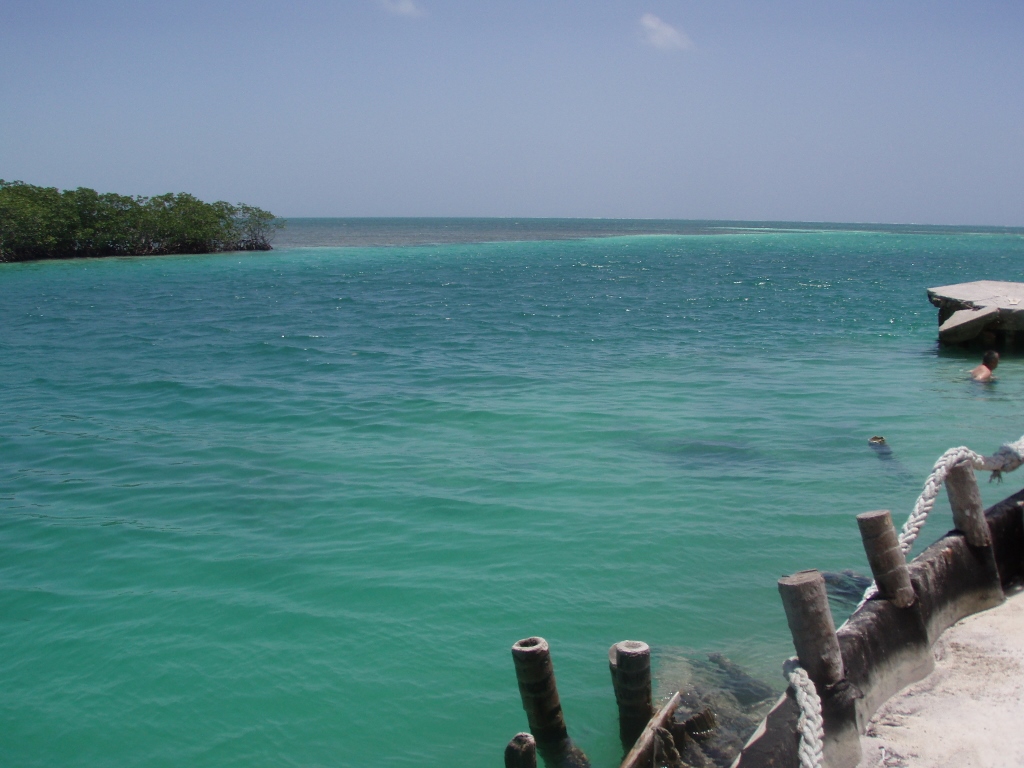 Caye Caulker: Split in May 2008
Caye Caulker: Split in May 2008
With this, practically, strait, the island is divided into the north part that is around 5 km long and the south part almost 3 km long. Although there are some hotels and properties in the north part nowadays, the main settlement is on the south part of Caye Caulker and it is aptly called Caye Caulker Village. The pier used by the motorboat from Belize City that I came by was located in the village, as was my hotel.
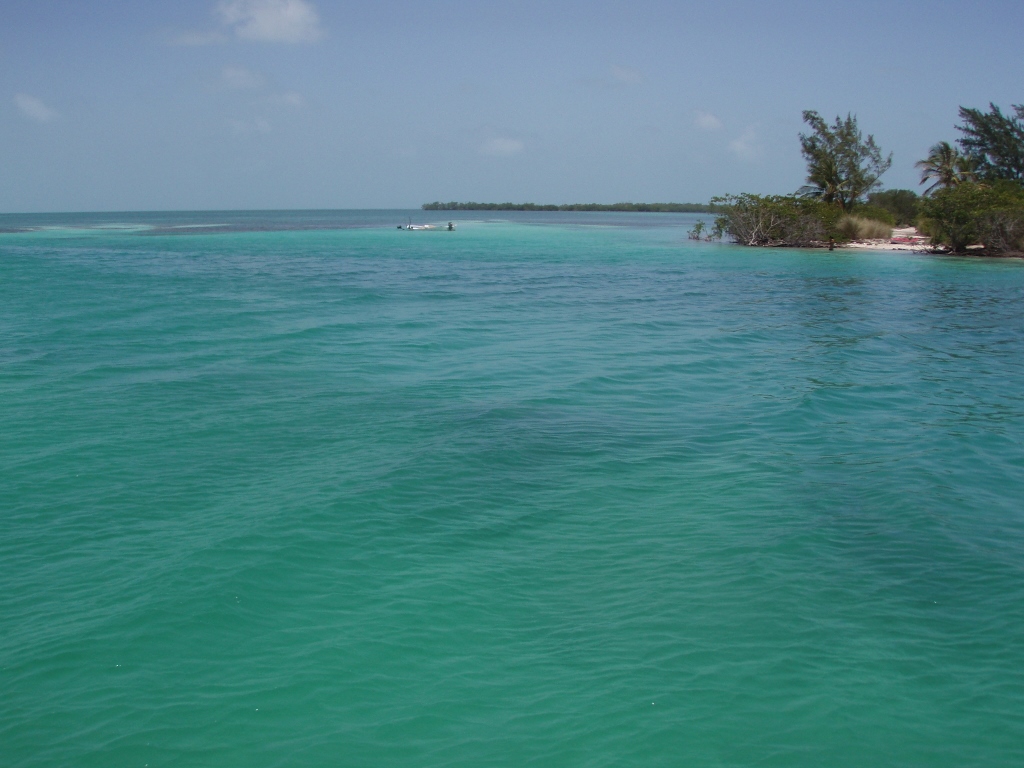 View at the Split and the north part of Caye Caulker
View at the Split and the north part of Caye Caulker
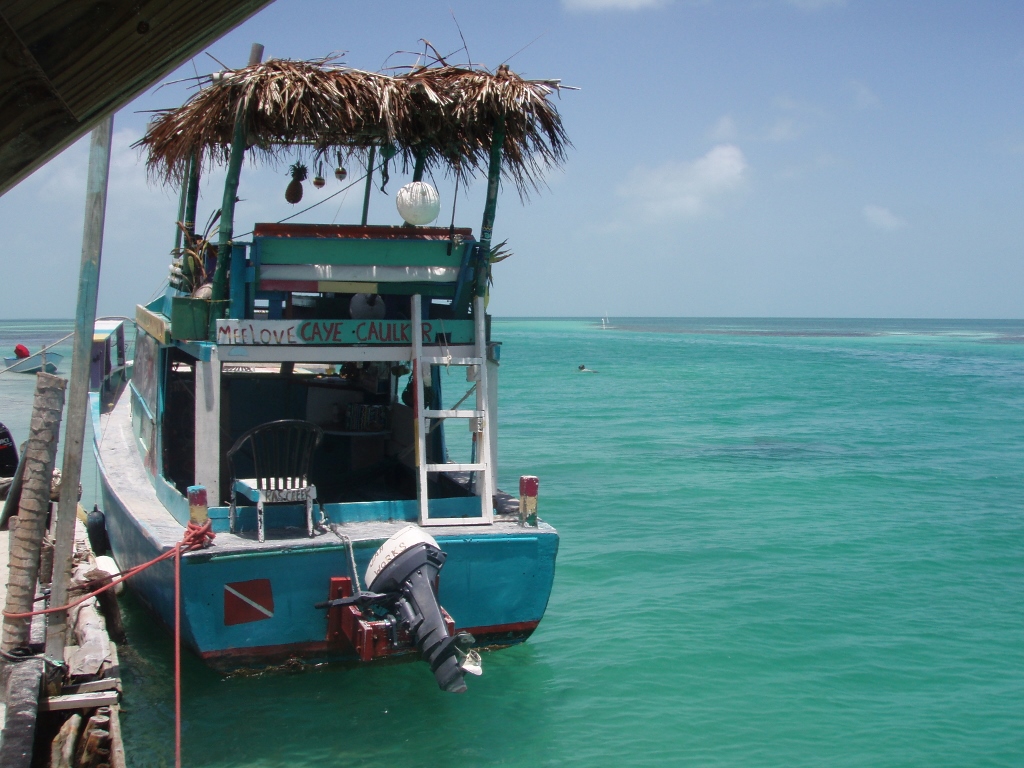 Detail from the Split
Detail from the Split
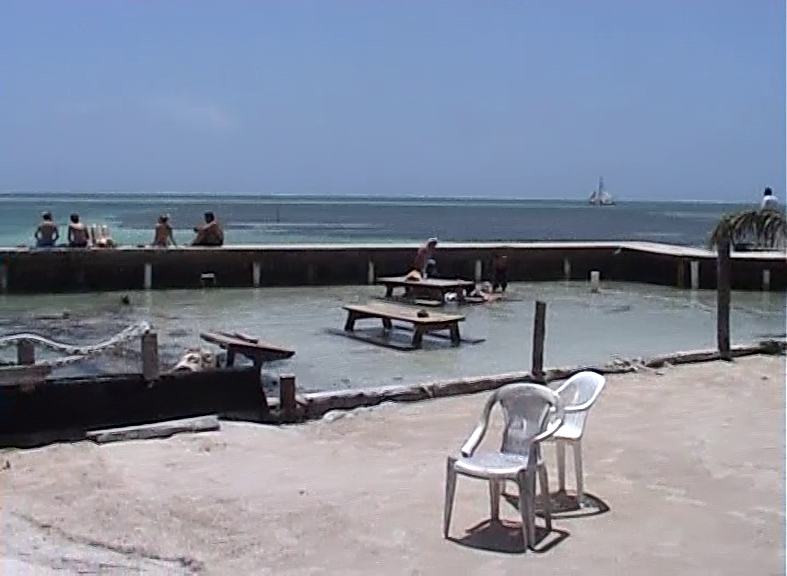 Corralled part near Split that serves as some kind of a shallow pool
Corralled part near Split that serves as some kind of a shallow pool
Since I really love to swim and not only to be immersed in water, this “pool” in the photo above did not attract me in the least. It seemed to me that Split itself was the only decent place for swimming, as it was deep enough, although while standing on the shore it also seemed that the current was rather strong here. It was all left for me to check out some other time.
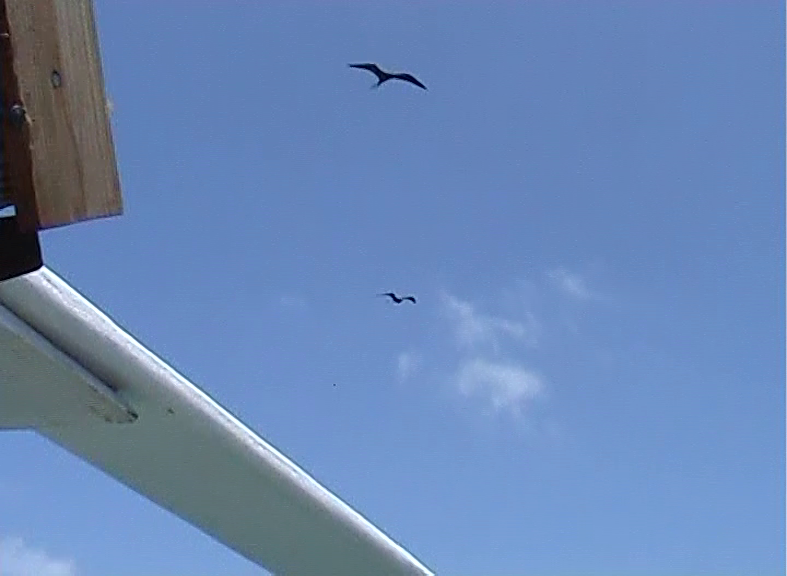 Two frigate birds gliding above the Split
Two frigate birds gliding above the Split
At the very north end of the lower part of the island, by the Split, there were several cafés and restaurants, so I saw that as well as an invitation to swim in the Split first and then rest here after the swimming.
When these days I look on the internet the photos of this part of Caye Caulker I find it interesting to see how much has changed in the meantime, not in terms that anything was ruined there, but that it has been developed. It seems to me I was there not so long ago and I don’t think that anything was wrong in the way it looked and what was offered back then and yet the modern tourism and new visitors obviously ask for more, and more, and more.
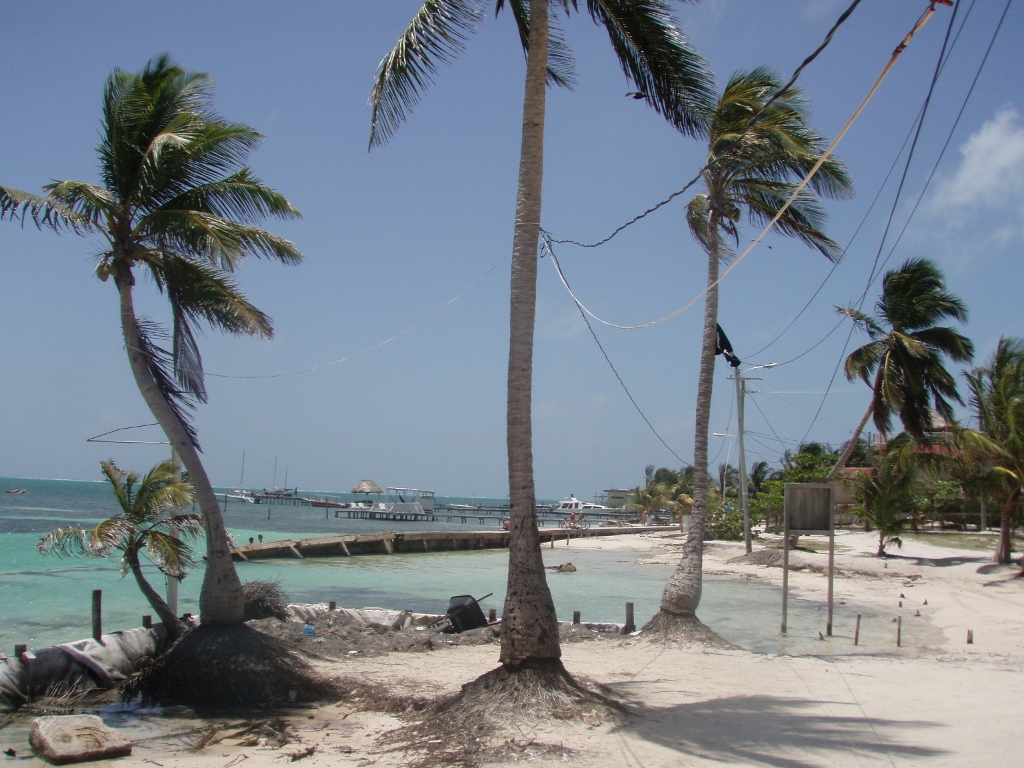 Part of the Split area in 2008 that no longer exists in 2021 and the view at the south coast of Caye Caulker
Part of the Split area in 2008 that no longer exists in 2021 and the view at the south coast of Caye Caulker
After the short stay by the Split, I turned around and walked back towards the “centre” of the village.
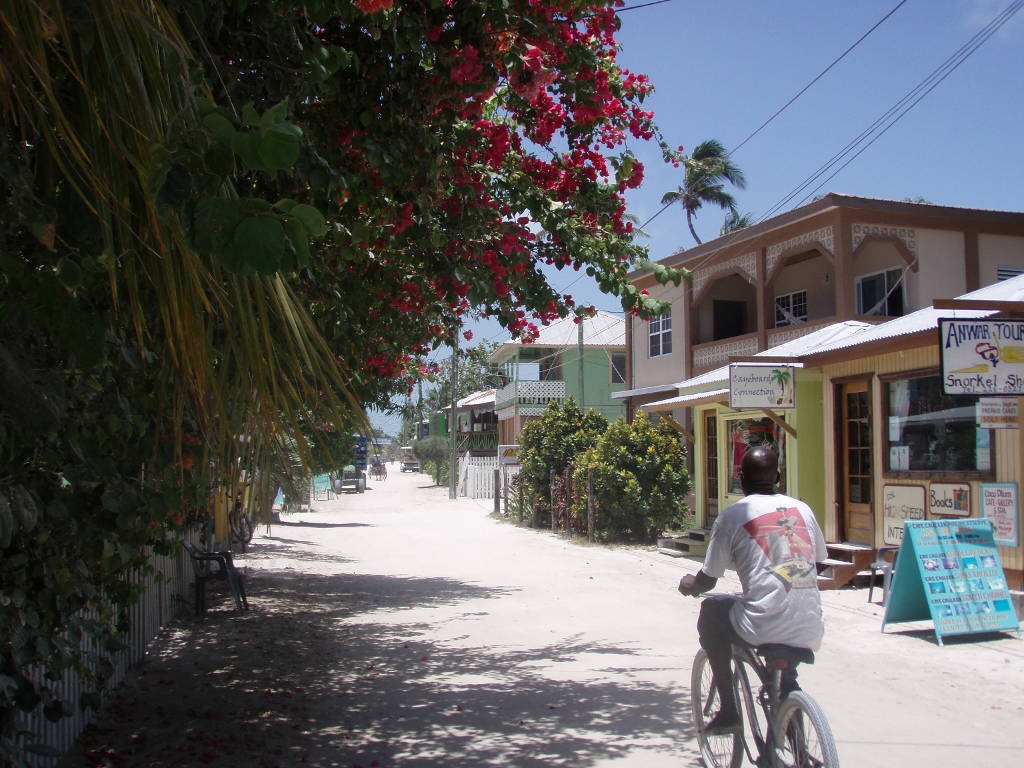 Caye Caulker Village
Caye Caulker Village
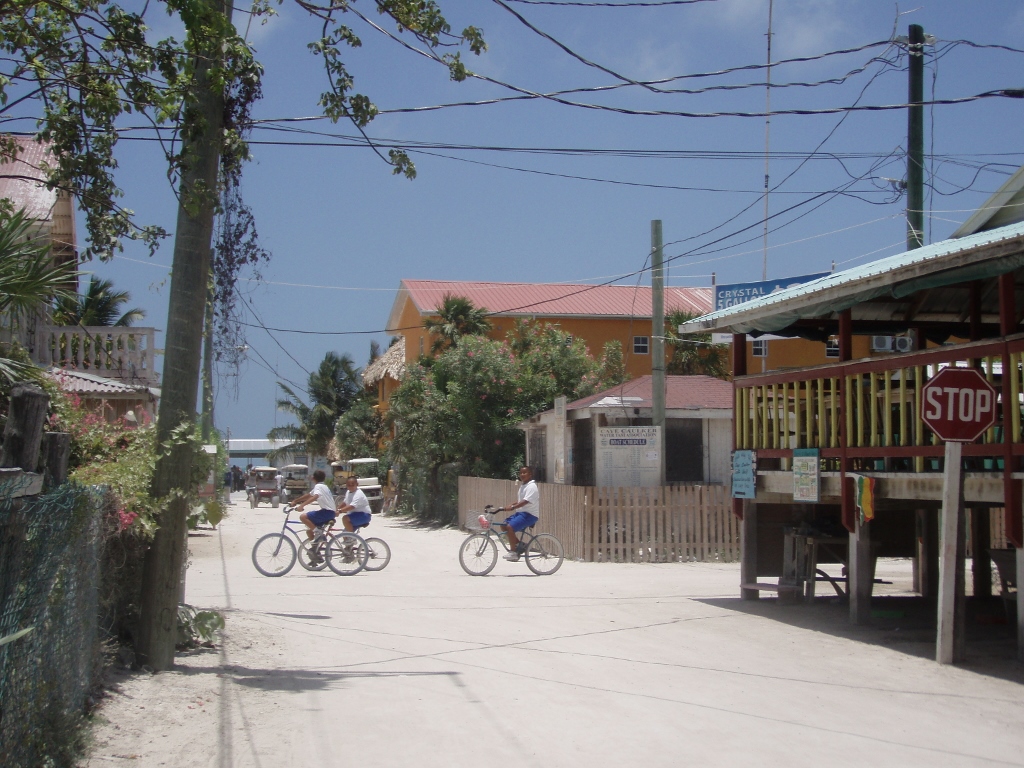 Caye Caulker Village
Caye Caulker Village
Although the streets are quite clearly defined, there is no asphalt, but only sand. The main means of transportation on the island are – legs. After all, the urban segment of the south part of Caye Caulker is less than 2 km long and that is a half an hour walk as a maximum. Still, for those who do not like to walk, there are bicycles and, as of lately, small golf-carts.
As it can be seen in the photo above, and even better in the next one, a large number of houses on Caye Caulker are practically a version of the stilt house. Since the highest point on the island is just shy of 2.5 metres above sea level, while the island regularly faces the danger of hurricanes that bring along not only strong winds, but also a significant storm surge, in this way the houses are protected to a certain degree.
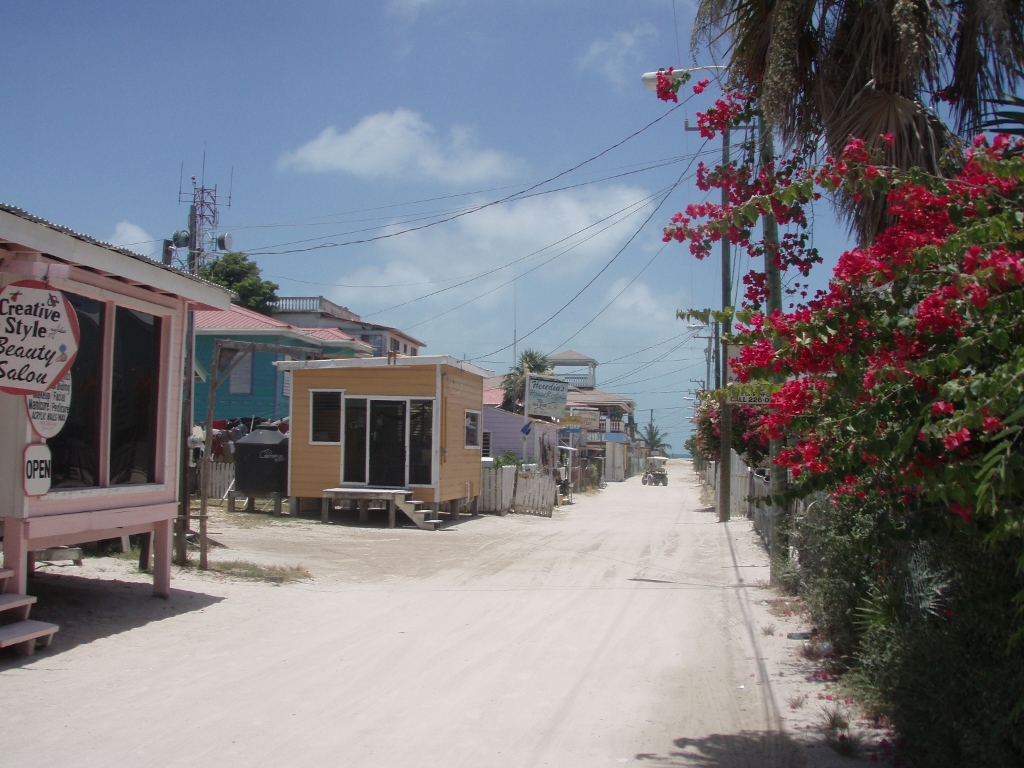 Houses in Caye Caulker Village
Houses in Caye Caulker Village
During my walk through the village, I bought some postcards, as well as two second-hand books at some kind of a bookstore for I wanted to have something to read during my “vacation.” I also started to inquire about excursions and it turned out that most likely there would be one to the Lighthouse Reef. This was actually one of the two places in Belize I wanted to see, so I was keenly interested. I was told it was still not clear whether there would be a sufficient number of people listed up for the excursion, so they told me to come back again later in the afternoon.
Then I returned to my hotel where I first went to the beach which was in fact located by my hotel. The water in the shallows did not look promising at all, but there was a wooden pier and ladders at its end that allowed one to get into the water, as well as get out.
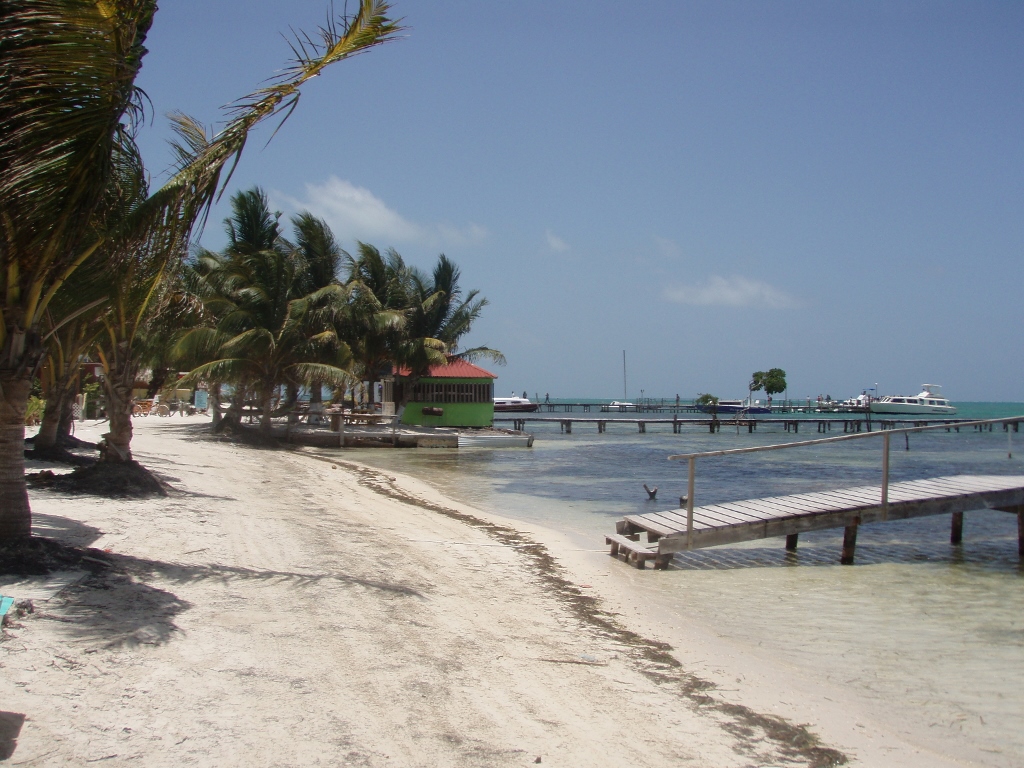 Beach by the hotel
Beach by the hotel
However, I was still not ready to go for a swim since I had to eat something. I decided to do this at the hotel that had its own restaurant and this turned out not to be a bad solution after all.
I took nachos as a starter, covered in some melted cheese and sauce, and the best accompaniment to this was – beer.
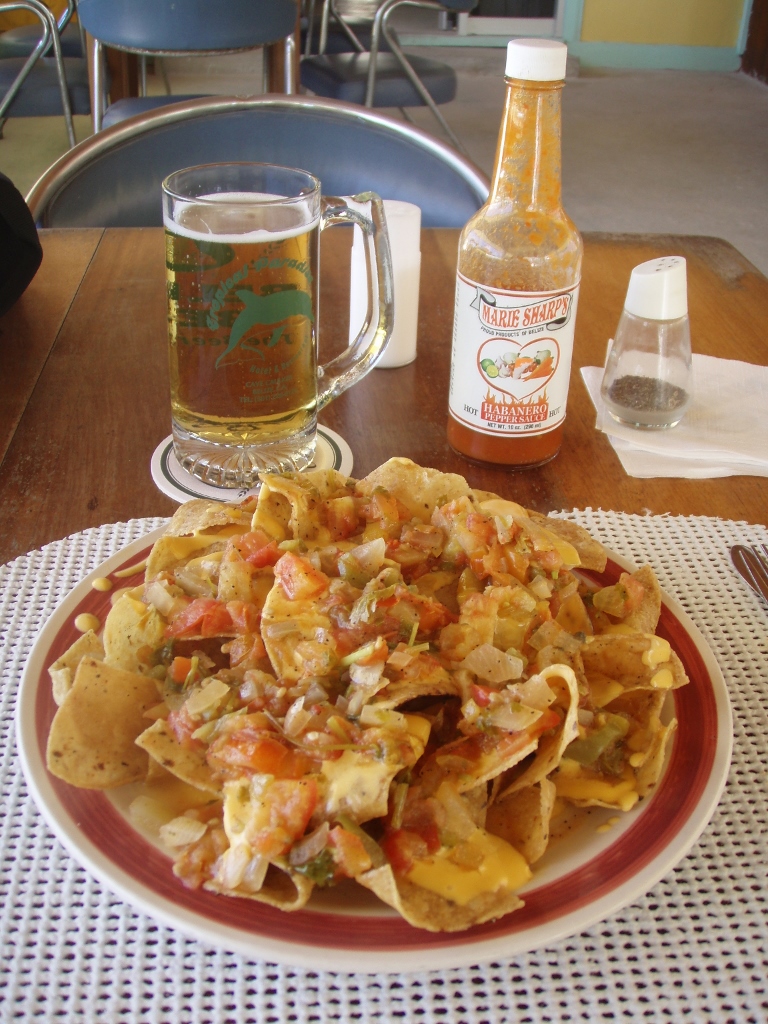 Starter on Caye Caulker
Starter on Caye Caulker
My main course was grilled red snapper (Lutjanus campechanus).
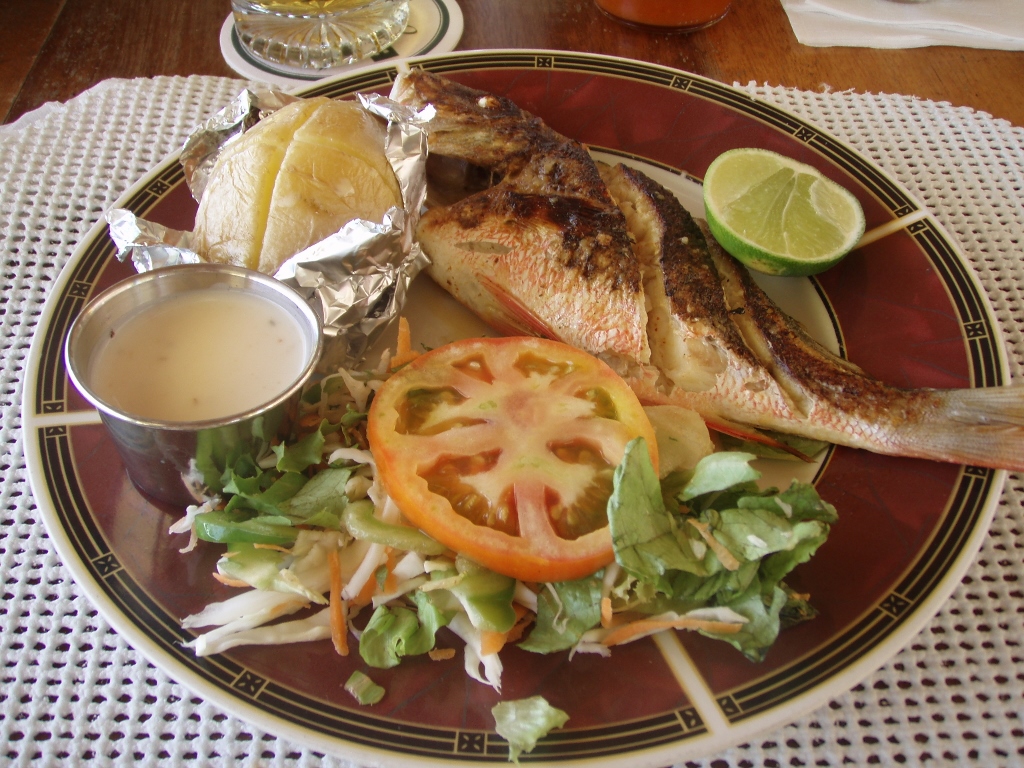 Main course on Caye Caulker
Main course on Caye Caulker
And it was an excellent lunch!
With the pleasantly full stomach, after the lunch I sat on the beach and even went for a dip from the pier, but the enjoyment was not great since the water was quite murky, among other reasons because of the sea weeds, but it constituted a sort of refreshment. On the other hand, I did not want to stay in the water for too long because, apart from my face, arms and the lower part of my legs that had been exposed to the Sun during the previous legs of my journey, all other parts of my body were quite white, so I did not want to take a chance and get sunburned. So I sat in the shade made by a couple of palm trees and then I started to read one of the books I had bought earlier. It was a typical “light” literature that is commonly read on vacation. And I must admit it felt good. I could easily get immersed into the story, while not having to think a lot.